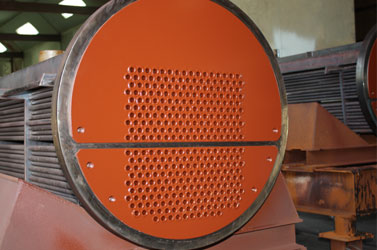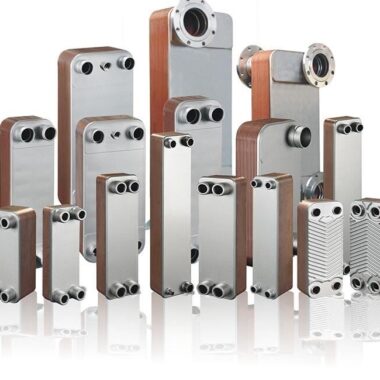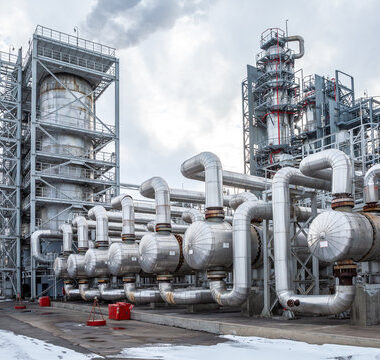Advanced heat exchanger coatings
Introduction
Advanced heat exchanger coatings have emerged as a revolutionary solution to these challenges. By providing a protective barrier, these coatings significantly improve the durability, efficiency, and longevity of heat exchangers, allowing them to operate under harsh conditions while maintaining optimal performance. With advancements in materials and technology, these coatings offer enhanced thermal conductivity, resistance to wear and corrosion, and reduced maintenance, making them indispensable in modern industrial applications.
- Corrosion Resistance: Heat exchangers are often exposed to corrosive fluids, such as saltwater, chemicals, or acidic substances. Advanced coatings, such as fluoropolymers, ceramic coatings, and epoxy resins, create a protective barrier that prevents corrosion, thus extending the lifespan of the exchanger and maintaining efficiency over time.
- Fouling Reduction: Fouling occurs when unwanted deposits, such as minerals, organic materials, or scaling, accumulate on heat exchanger surfaces. Anti-fouling coatings reduce the adhesion of these materials, allowing the exchanger to operate efficiently for longer periods and reducing the need for frequent maintenance or cleaning.
- Thermal Conductivity Enhancement: Some advanced coatings are designed to enhance heat transfer by reducing thermal resistance between the fluid and the surface of the heat exchanger. This increases the overall efficiency of the heat exchange process without compromising durability.
- Erosion Protection: In industries where high-velocity fluids or abrasive particles are present, heat exchanger surfaces can suffer from erosion. Durable coatings like ceramic or tungsten carbide provide a hard, wear-resistant layer, protecting the surfaces from erosion and extending the operational life of the equipment.
- Anti-microbial Properties: In industries such as food processing, pharmaceuticals, and HVAC systems, microbial growth can lead to fouling and contamination. Coatings with anti-microbial properties help prevent the growth of bacteria, algae, and mold, ensuring a cleaner, safer operation and reducing health risks.
- Improved Surface Cleanability: Advanced coatings often have non-stick properties, making it easier to clean the surface of the heat exchanger. This reduces downtime and the frequency of cleaning cycles, resulting in lower operational costs and enhanced system uptime.
- High-Temperature Resistance: In applications such as power generation and chemical processing, heat exchangers are exposed to extremely high temperatures. Advanced coatings like ceramic or specialized metallic coatings can withstand high thermal loads without degrading, allowing the heat exchanger to maintain performance even under extreme operating conditions.
- Chemical Resistance: In chemical processing plants, heat exchangers often come into contact with aggressive chemicals that can degrade standard materials. Coatings like PTFE (polytetrafluoroethylene) or nickel-based alloys provide excellent chemical resistance, ensuring that the heat exchanger surfaces are protected from chemical attacks, thereby increasing longevity.
- Hydrophobic Properties: Some advanced coatings have hydrophobic properties, meaning they repel water. This is particularly useful in air-cooled heat exchangers where water condensation can reduce efficiency. A hydrophobic coating prevents water droplets from sticking to the surface, allowing for better air circulation and more efficient cooling.
- Energy Savings: By maintaining optimal thermal conductivity and preventing issues like fouling, corrosion, and scaling, advanced coatings help in reducing the energy required to operate the heat exchanger. This results in significant energy savings over the lifetime of the equipment, making the system more cost-effective and eco-friendly.
- Extended Maintenance Intervals: Heat exchangers with advanced coatings require less frequent maintenance and cleaning due to their anti-fouling and anti-corrosion properties. This reduces downtime, extends operational periods between maintenance shutdowns, and lowers overall maintenance costs.
- Improved System Reliability: The application of advanced coatings reduces the likelihood of unexpected system failures due to corrosion, fouling, or wear. This leads to higher reliability and fewer operational interruptions, which is especially important in critical industries like power generation, pharmaceuticals, and food processing.
- Customization for Specific Applications: Coatings can be tailored to meet specific operational requirements, such as extreme temperature ranges, chemical compatibility, or environmental conditions. This customization ensures that the heat exchanger is equipped with the best protective layer for its particular application, leading to optimized performance and durability.
- Environmental Benefits: Coated heat exchangers can reduce the need for harsh chemical cleaners and minimize the frequency of maintenance, which lowers the environmental impact associated with waste disposal and chemical usage. Additionally, improved energy efficiency contributes to reduced carbon emissions and overall energy consumption.
- Reduced Material Degradation: Over time, heat exchangers without proper coatings may experience material degradation due to oxidation, scaling, or corrosion. Advanced coatings act as a protective layer, preventing these processes from affecting the core material of the heat exchanger, ensuring a longer operational life.






